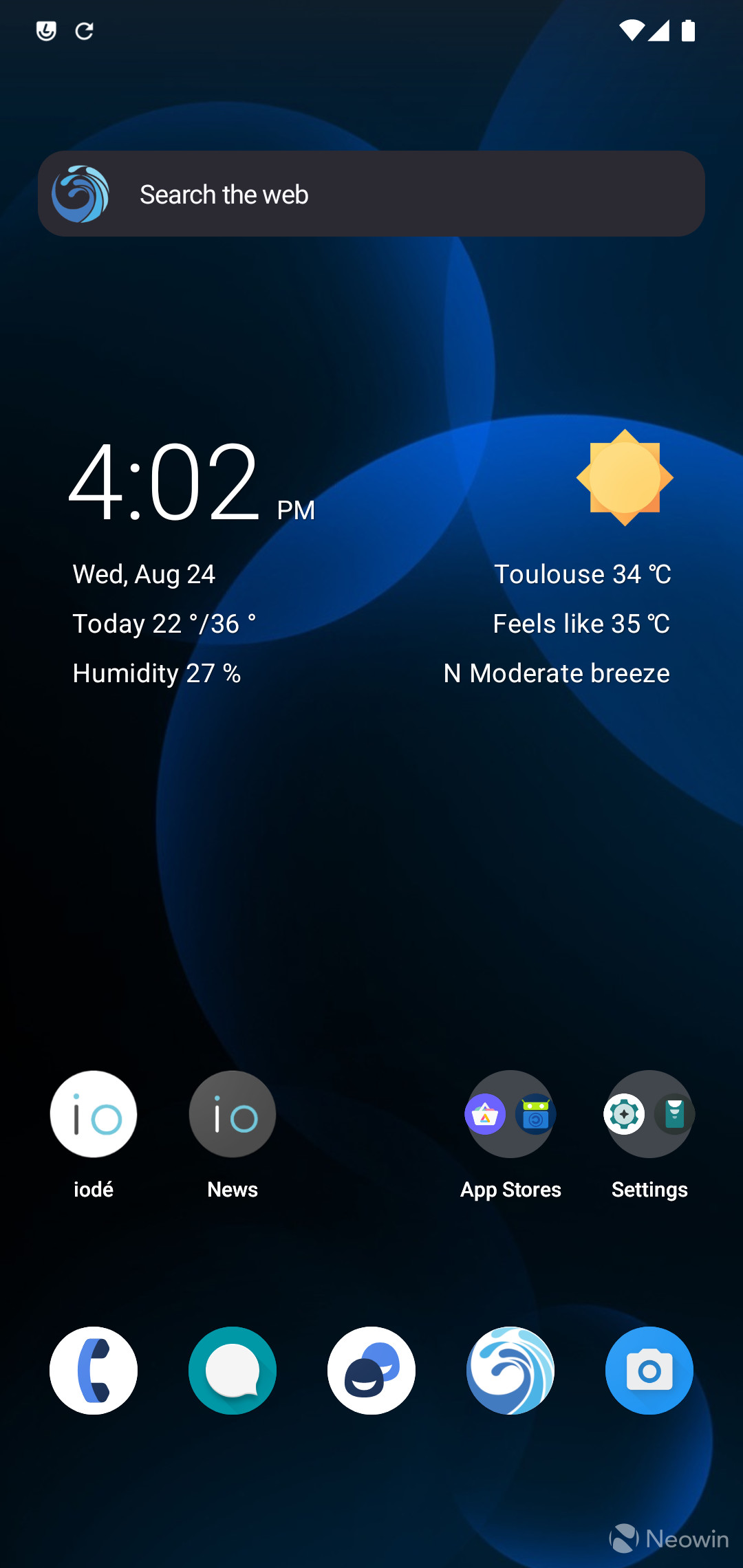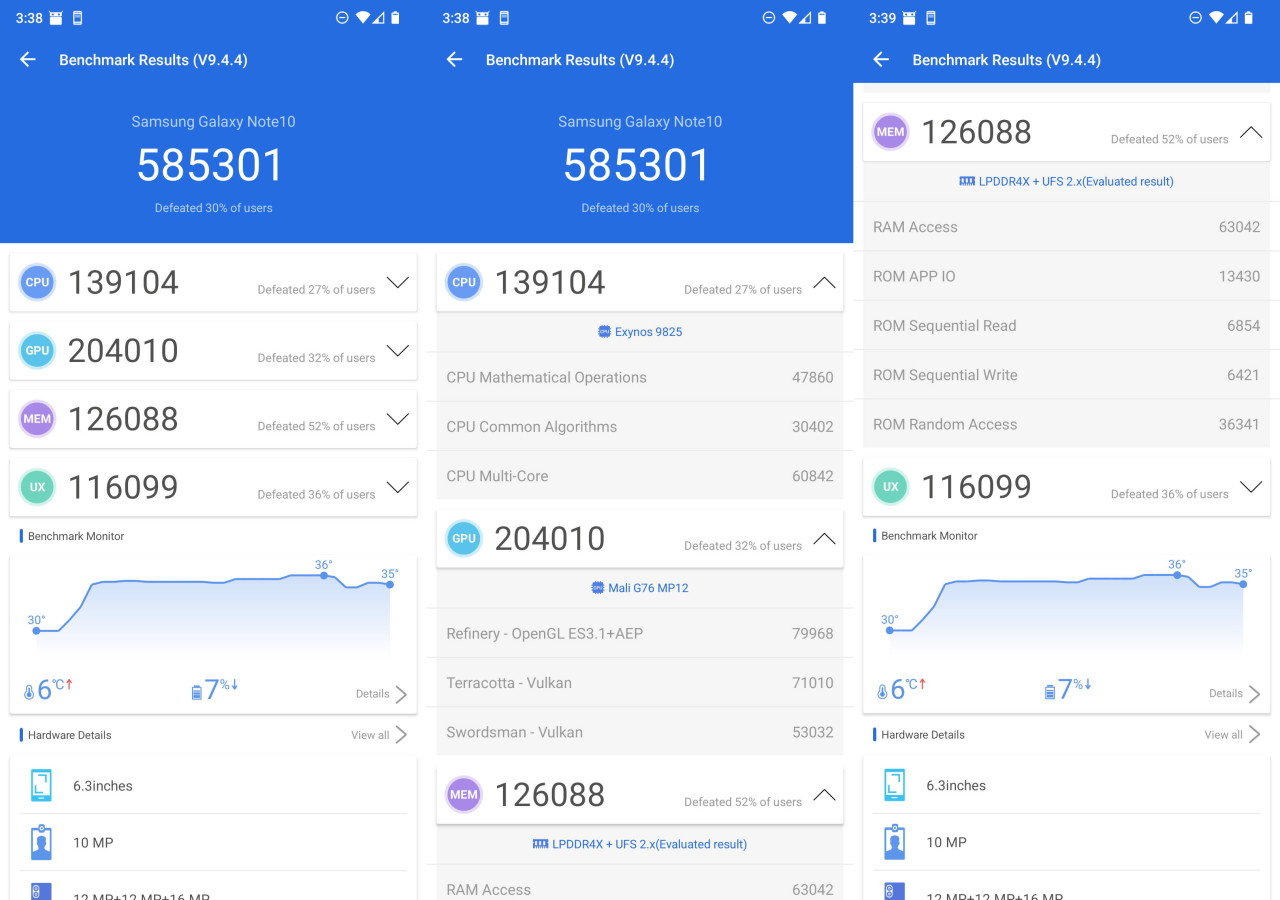It's easy to forget the cost of convenience when so much of our lives are intertwined with the "free" services offered by Google on our Android phones. That's why I was intrigued when Antoine Maurino, a co-founder of iodé, a company based out of France, reached out to me and asked if I was interested in reviewing one of their phones.
I hadn't heard of them before, but on doing a search I was immediately familiar with the Android operating system LineageOS, which is what iodéOS is based on. The current version of iodéOS is based on Android 12 and (as of writing) can be downloaded and installed on a select number of phones from Fairphone, Teracube, Samsung, Sony, and Xiaomi.
You can also buy new phones from Teracube and Fairphone, or refurbished from the manufacturers mentioned above with iodéOS pre-installed. The refurbished phones come in either aesthetic grade A (as new) or B (good) but all phones come with a 12-month warranty and a certified battery life.
So what is iodéOS? Basically, it is a privacy-first OS for people that want to be de-Googled. As best described on its website:
iodé aims at protecting your privacy by removing Google trackers and analyzing data requests from your apps in real time. The analysis happens locally on your phone and we don't have access to that data.
iodé lets you:
- see the identity of all recipients and the quantity of data they wish to collect
- block any recipient. Unwanted recipients (advertisements, trackers, malwares, spams, ...) are blocked automatically by default
- measure how privacy-respectful your apps are
Let's see what it's all about, then.
Day 1
For my testing I was sent a 'grade A' Note10, and upon receiving it, I was immediately impressed by the packaging. iodé does not include the original Samsung packaging and instead uses its own. In the box you'll find a pair of wireless earplugs, a Fast USB charger and cable, and a protective case. The phone is also covered in a removable protective plastic to really give the idea you're unwrapping a brand-new phone.
The Note10 really did look like new, and I was unable to find any scratches or damage to it. The only downside I later discovered was that when calling, the earpiece volume was super low. I was able to rectify this by using a tooth brush and cleaning alcohol on the earpiece slit, which is so tiny, only toothbrush bristles can get in and move out any dust or gunk that had accumulated over the years. I reported this to Antoine, who said he would get the refurbish team to double-check this process.
Setup
Upon powering up the phone for the first time, I was greeted with a warning that unofficial software was installed on the Note10 and that Knox was tripped. This is expected behavior for any rooted Samsung phone, and it isn't something that iodé can bypass.
The setup went smoothly with options you'd expect to find on a new phone, such as selecting the language, joining a Wi-Fi network, selecting a navigation preference and security settings. You can see the entire process above. The only thing that didn't feel particularly polished was the final screen and Welcome to iodé that had a different feel than the setup process. That last stage lets you decide which pre-installed apps will remain on the phone, which immediately goes to show that you truly have control over the apps on the phone. I elected to leave the default apps installed.
iodéOS uses the Trebuchet launcher which is clean, no fluff or bloat launcher, and you're presented with a screen with a few default apps, a time and weather widget and search widget which is powered by the iodé Browser, which itself is based off Mozilla Firefox.
Above, you can see the extent of the apps that are installed along with the iodé Browser. Additional apps can be installed via the Aurora or F-Droid stores. Although you don't need an account to use them, it helps if you want to be in a place where you can easily and conveniently restore apps further down the line, from a phone reset for example.
As you can see above, the Home screen settings even allow for a Google page on the Home screen when swiping right, but when enabled, and even after logging in, nothing is displayed, so I disabled it.
I made the mistake of downloading the Samsung Smart Switch app via the Aurora store and using it to migrate my apps and settings from my Note9 to the Note10. After the whole process finished, I was surprised to see that it was only able to pull my contacts. No apps made it across, because Play Services are not installed, most likely. I decided to reset the phone and set it up manually. Maybe I should have seen the signs when Smart Switch refused to connect via cable.
Performance
As this is a refurbished phone with a different (and lighter) OS on it, I decided to run a series of benchmarks to see if we would get different results than the “normal” Note10. I started off by running GFXBench which tests the GPU.
GFXBench doesn't have a great compare stat, it actually chooses devices that are older such as the Nvidia Shield, Galaxy S8 and S7 series, which isn't that helpful. Next up I ran Geekbench:
This result is quite interesting because it beats out the by-Samsung-preloaded Note10 by an impressive 145 points (655) with the same Exynos 9825 chipset. Multicore is the same story, with the iodéOS variant beating the vanilla variant by a more conservative 29 points (1984), but a win's a win!
And finally, the AnTuTu benchmark.
Once again we see the AnTuTu score beating out the 78th placed by-Samsung preloaded Note10 comfortably, in this case by 48,394 points.

It ends up sitting between the newer Galaxy S20 and Nothing Phone. That's testament to LineageOS and efforts by iodé with its privacy tracker to strip out the unnecessary bloat and behind the scenes tracking.
Conclusion
Ultimately, in order to enjoy iodéOS, you will want to be de-Googling, and while it is possible to install any Google app you want from the Aurora store, it might not work because it may rely on Google Play Services, which aren't installed (although you could sideload Open GAPPS).
When I tried to set up Android Auto, I found I could install it along with the companion AAWireless app, but beyond being able to open Android Auto on the Note10, I could not get it to connect to my car. Services which rely on Google Prompt is the same story, I'm almost ashamed at how much of my work and personal life revolves around my Google account and those “free” services. Then there is the grey area of the Aurora store violating §3.3 Google Play Terms of Service because it communicates with Google APIs without warning the end user, which can result in an account ban.
Also, for someone coming off a lot of Google services including Google Home, you will definitely feel the presence of the iodé app, as it blocks anything to do with those apps communicating back to Google. In one example of a non-Google app, I had to disable the iodé tracker in order to be able to sign in to the Tidal music app.
But let's circle back and appreciate for a moment that iodé as a company is also breathing life into older phones, and it carries Fairphone, which is ethically sound. I personally own a Note9 which stopped receiving OS updates with Android 10, and as it is my main phone, I did not want to mess around rooting it to get those Android 12 features. Here we have a company that is selling phones with Android 12 with 12 months of guarantee for roughly the same asking price as what you'd find on the second-hand marketplace.
At the moment, iodé only sells new and refurbished phones in the European Union, Switzerland, Norway and the UK, but if you are outside Europe in a place such as the United States, you can always install iodéOS yourself on a supported phone. So in a nutshell, if you want total control of where your apps are communicating, or you're fed up with Google and don't want to be tracked any more, then this is definitely for you.















































































15 Comments - Add comment